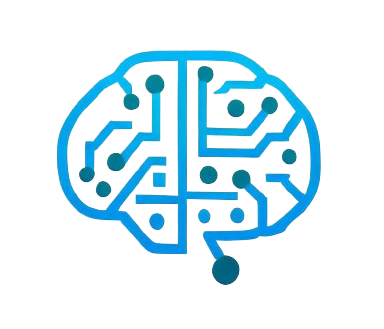Performance computing, an interdisciplinary field at the intersection of artificial intelligence, psychology, and cognitive science, is rapidly gaining momentum due to its potential to revolutionize human-computer interaction. This branch of technology focuses on enabling machines to recognize, interpret, and respond to human emotions. As technology permeates every aspect of our lives, the ability of machines to understand and respond appropriately to human emotions is a significant step forward, illustrating how deeply intertwined our interactions with computing tools are.
The Importance Of Recognizing Emotions
Human emotions play an important role in our everyday interactions, influencing decision-making, behavior, and general well-being. Traditional computing systems that rely solely on data and logic often ignore this critical component. Including emotion recognition, affective computing aims to create more natural and intuitive interactions between humans and machines. Emotionally aware systems can improve user interaction by making applications more responsive and adaptable to individual needs.
Understanding and interpreting human emotions is a complex task, mainly because emotions are expressed through various channels, including facial expressions, speech, body language, and physiological responses. For example, when someone is happy, their facial muscles may relax, their speech may become more animated, and their heart rate may decrease. Conversely, when someone is stressed, they may frown, speak faster, and sweat more.
The ability to recognize and respond to these emotional signals can greatly improve applications in various fields such as customer service, healthcare, education, and entertainment. For example, in the field of customer service, emotion recognition can allow help desk agents to identify frustrated customers in real-time and adjust their approach to better meet customer needs, thus increasing satisfaction and problem resolution. In healthcare, emotion recognition can help monitor patients’ mental health by identifying signs of stress, anxiety, or depression through non-invasive means such as facial expression analysis or voice tone assessment. This may facilitate early intervention and individualized treatment strategies.
 In educational institutions, emotionally aware systems can adapt teaching methods to the emotional state of individual students. For example, if a student seems confused or disinterested, the system can recommend viewing the material with different examples or providing additional support. In entertainment, video streaming services can analyze the emotional responses of viewers to offer similar content, increasing user engagement and retention. Emotionally responsive game systems can adjust game difficulty and narrative based on players’ emotional state, offering a more personalized and engaging experience.
In educational institutions, emotionally aware systems can adapt teaching methods to the emotional state of individual students. For example, if a student seems confused or disinterested, the system can recommend viewing the material with different examples or providing additional support. In entertainment, video streaming services can analyze the emotional responses of viewers to offer similar content, increasing user engagement and retention. Emotionally responsive game systems can adjust game difficulty and narrative based on players’ emotional state, offering a more personalized and engaging experience.
Emotion recognition can help in social robotics, where robots interact with people in different environments such as homes, hospitals, and workplaces. These robots can be programmed to recognize and respond to human emotions, making their interactions more effective and acceptable. For example, a social robot in a hospital can recognize that a patient is in pain or suffering and alert medical staff, thereby improving patient care.
Emotion Recognition Methods
The science behind emotion recognition uses different methods, each with certain advantages and limitations. These methods are mainly divided into three categories: facial expression analysis, speech analysis, and physiological signal analysis.
Facial expression analysis. One of the most common methods of emotion recognition is facial expression analysis. The human face is saturated with emotional information, capable of conveying a wide range of feelings with the help of subtle movements and gestures. Machine learning algorithms trained on large datasets of facial images can detect patterns in facial features associated with different emotional states. Techniques such as convolutional neural networks (CNNs) have proven particularly effective for this purpose. By identifying key facial landmarks such as the corners of the mouth, the position of the eyebrows, and the shape of the eyes, these algorithms can identify emotions such as happiness, sadness, anger, and surprise with high accuracy. Real-time facial recognition systems use cameras to capture facial expressions, which are then analyzed frame-by-frame for continuous emotion detection.
Speech Analysis. Emotions are not only visible but also reflected in the tone, pitch, and rhythm of our speech. Speech analysis involves examining these vocal signals to determine the underlying emotional state. Machine learning models can be trained on audio data to recognize patterns associated with different emotions. Techniques such as Mel-Frequency Cepstral Coefficients (MFCC) are used to extract features from speech signals. These features include pitch variation, speech rate, and voice quality, which are then fed into classification algorithms such as support vector machines (SVMs) or recurrent neural networks (RNNs). For example, a higher pitch and faster tempo of speech may indicate excitement or anger, while a slower, softer tone may indicate sadness or calmness. This approach is particularly useful in applications where visual information is not available, such as communicating with customers over the phone or virtual assistants.
Physiological Signal Analysis. Emotions can also be detected using physiological signals such as heart rate, skin conductance, and brain activity. Wearable devices equipped with sensors can monitor these signals in real-time, providing valuable information about a person’s emotional state. For example, heart rate variability (HRV) can be an indicator of stress or relaxation, while skin conductance measured using electrodermal activity (EDA) sensors can indicate arousal levels. Electroencephalography (EEG) measures brain waves and can provide insight into emotional states, such as excitement or frustration. Machine learning algorithms can process these physiological signals and classify emotions based on observed patterns. Techniques such as principal component analysis (PCA) and linear discriminant analysis (LDA) are often used to reduce the dimensionality of data and improve the performance of emotion classification models. Although this approach requires additional equipment, it offers a more direct and objective measurement of emotional responses than visual or auditory methods.
These methods can be used individually or in combination, depending on the requirements and constraints of the application. Multimodal emotion recognition systems that combine facial expressions, speech, and physiological signals tend to provide higher accuracy and reliability by cross-validating emotional signals from different sources. For example, the system can analyze both facial expressions and speech of a person to more accurately determine his emotional state.
Practical implementation of these methods requires reliable data collection, preprocessing, feature extraction, and model training. Large and diverse data sets are needed to train models that generalize well across people and cultural differences in emotional expression. Data preprocessing steps such as normalization and denoising are critical to ensure the quality and consistency of the input data. Feature extraction techniques help identify the most relevant attributes from the raw data, which are then used to train machine learning models capable of effectively recognizing and classifying emotions.
Application
The potential applications of performance computing span numerous fields, offering tangible benefits in sectors such as healthcare, education, customer service, and entertainment. Each of these applications leverages affective computing capabilities to recognize emotions to improve user experience and improve operational outcomes.
In healthcare, emotionally aware systems can provide valuable support for mental health monitoring and intervention. For example, wearable devices equipped with sensors can continuously monitor physiological signals such as heart rate and skin conductance to detect signs of stress, anxiety, or depression. Mobile apps connected to these devices can provide real-time feedback and offer coping strategies or relaxation techniques. Telemedicine platforms can include emotional recognition from patients’ facial expressions and language during video consultations, allowing healthcare providers to better assess mental well-being and adjust treatment plans accordingly. Early detection of emotional distress can lead to timely intervention, reducing the risk of serious mental health problems.
In education, emotion recognition can improve personalized learning experiences. Equipped with cameras and microphones, educational software can analyze students’ facial expressions and vocal tones to gauge their level of engagement and understanding in real-time. For example, if a student’s facial expression shows confusion or frustration during an online lesson, the system can automatically provide additional explanations or adjust the level of difficulty of the material. Emotionally responsive learning platforms can help keep students motivated by recognizing signs of boredom or fatigue and incorporating interactive or gamified elements to re-engage them. This leads to more effective learning methods that meet individual emotional and cognitive needs, improve learning outcomes, and reduce dropout rates.
In customer service, efficient computing can facilitate more responsive and responsive interactions. Customer service agents can use emotion recognition software to detect frustration or displeasure in a customer’s voice during phone calls or chats. This information can prompt agents to change their communication style, such as speaking more calmly or offering additional assistance to better respond to customer concerns. Emotionally aware chatbots can provide a more human-like interaction by responding to customers’ emotional signals, increasing user satisfaction. For example, a chatbot that detects a user’s frustration with a product issue can transfer the conversation to a human agent or offer personalized apologies and solutions, improving the overall customer experience.
In the field of entertainment, emotionally aware systems can create more engaging and engaging experiences. Streaming services can analyze viewers’ emotional reactions to different scenes using cameras or wearable devices, gathering data on what content resonates the most. This information can be used to recommend movies and shows that match the viewer’s emotional preferences, increasing viewer retention and enjoyment. In the gaming industry, emotion recognition can be integrated into gameplay to adjust difficulty levels, storylines, or in-game events based on the player’s emotional state. For example, the game can become more challenging if it detects that the player is bored, or offers hints and help if the player shows signs of frustration, resulting in a more personalized and satisfying gaming experience.
